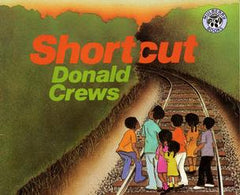Menu
-
- Home
-
About Us
-
The Approach
-
Linking Language & Literacy
-
MindWing Learning
-
Learning Resources
-
SHOP
-
Blog
-
- About MindWing
- Our People
- Contact Us
- Your Account
- Login
-
Spain (EUR €)

MindWing Concepts Blog
“Make It Better” through Storytelling
October 25, 2010
 It’s really exciting when a speech-language material is published that provides clinicians with a ready-to-go resource that jibes well with strategies we already have been teaching. Such is definitely the case with the excellent We Can Make it Better program recently released by Think Social Publishing and written by Speech-Language Pathologist Elizabeth Delsandro. We Can Make it Better is a set of 20+ stories in which social interactions go quite wrong due to “unexpected behaviors” by one of the characters. The materials and activities unfold in a very logical therapeutic structure that challenges students to “make it better” by deciding alternative actions for the characters...
It’s really exciting when a speech-language material is published that provides clinicians with a ready-to-go resource that jibes well with strategies we already have been teaching. Such is definitely the case with the excellent We Can Make it Better program recently released by Think Social Publishing and written by Speech-Language Pathologist Elizabeth Delsandro. We Can Make it Better is a set of 20+ stories in which social interactions go quite wrong due to “unexpected behaviors” by one of the characters. The materials and activities unfold in a very logical therapeutic structure that challenges students to “make it better” by deciding alternative actions for the characters...

Use Google Search Stories tool to develop narrative and expository language
October 12, 2010
Every year during the Superbowl, a few commercials stick out from the sea of repetitive beer, snack food, and summer blockbuster ads. This past year, one of the best was Google’s Parisian Love ad, which told the story of an American’s romance with a French woman in a simple and brilliant way, as an unseen character “Googled” various search terms that reflected events in his life. A follow-up ad about a girl switching schools, which I never saw aired, would be even more relatable for kids and is definitely a great model of a complete episode.
These commercials were so popular that Google created a wonderful tool that allows users to make their own Search Stories. Simply pick your search terms and the type of search you want shown in your movie (e.g. web, image, product, map, etc), select the music and upload to a YouTube account (if you have Gmail, you already have a YouTube account)...
Let the Setting Speak for Itself
October 12, 2010 1 Comment
Blabberize, a web app that allows you to add a talking “mouth” and recording for any picture, is a great tool for developing all kinds of organization and oral language skills. I recently used it with students in conjunction with a Setting Map from It’s All About the Story to develop descriptive skills and the concept of setting. After having students pick a favorite setting, we located a visually supportive image of the place using Google Images. Students completed a Setting Map and described key elements such as Location, Function/Use, Areas/Parts, etc. We then downloaded the image, logged in to Blabberize, added a mouth and integrated the notes on the Setting Map into an oral description. The example you can view here is one created with an individual student; you can always keep it shorter if you have a group!...
Setting Can be the Key to a Story
September 27, 2010

My previous post discussed the narrative element of setting and the tendency of students on the autism spectrum (or with other language disorders) to leave out details about setting, causing listener confusion. One way to explore the importance of setting is to plan interventions using books with an integral setting- where the setting is key to the motivations of the characters and understanding of the plot.
One of my favorites in this vein is Donald Crews’ Shortcut, the story of a group of cousins who find themselves in unexpected danger after taking a shortcut home. Not only does the book serve as an excellent example of building suspense around a small moment in a personal narrative (great for students working on memoir), it also lends itself to being mapped both on a Setting Map and a literal, visual map to develop storytelling skills...
Exploring Settings with Google Earth
September 10, 2010
In this post, I will be continuing to describe resources to supplement the lessons in It’s All About the Story, and moving on to the element of Setting. Setting is a key area of instruction for students on the autism spectrum not only because they tend not to observe the “expected behaviors” or script for a given setting, but also because they often leave out details about setting when telling stories to others, thus resulting in loss of a point of reference and confusion on the part of their listener. Students in social thinking/skills groups or individual treatment would therefore benefit from building descriptive skills through the use of the Setting Map contained in It’s All About the Story and other SGM resources...
Engaging Activities for Character Traits and Social Inference
August 24, 2010 1 Comment
In social group interventions, we would like our students to develop a sense of each other by building “friend files” (Michelle Garcia Winner). Some of the activities I have mentioned in previous posts can be of assistance in engaging students to share straightforward information about themselves. However, we also want to build students’ abilities to make inferences about each other—for example, wearing an Apple T-shirt might indicate that the person likes computers, and could be a good conversation starter...
